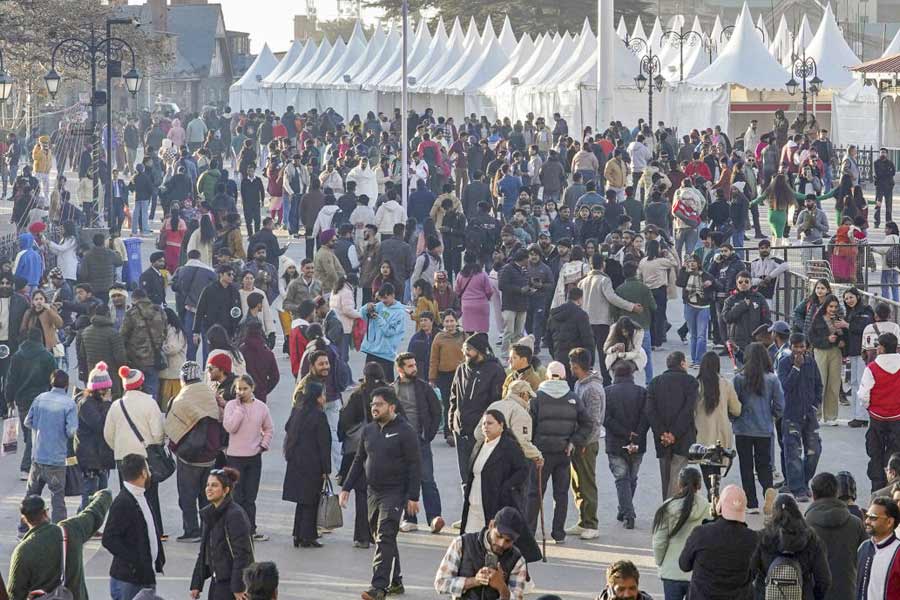Book: Empire Building: The Construction of British India: 1690–1860
Author: Rosie Llewellyn-Jones
Published by: Viking
Price: Rs 799
The focus of the book is the construction of British India in terms of built space in the subcontinent spearheaded largely by the English East India Company whose rule formally ended after the mutiny of 1857. It is about the making of bridges, public buildings, cantonments and hill stations, their architects and engineers, and the logistical problems the projects faced in all their minutiae. Its professed intention is to assess the impact of these buildings on the landscape, both in physical terms as well as in psychological terms. In its execution, however, the latter aspect is barely addressed. All that we are told is that the dispossessed elites in Bengal and Awadh were taken up with early colonial building styles that they sought to replicate in their twilight years. It is, of course, entirely understandable that the archive is skewed in favour of elite aspirations and disappointments and that any claims towards assessing the impact of public buildings on the general populace would have to be modest.
The book toys with the deployment of the idea of political architecture which is expressed in the ways the English East India Company set about planning its factories and establishments and its laying out of plans for the fortification of early colonial cities followed by their civic infrastructure. What is interesting about the early period of Company rule is the apparent absence of professional engineers and architects in planning its civil and military projects and its reliance on autodidacts, most of whom were Europeans trying their hand in surveys and civil and military engineering. It is not quite clear what the concept of political architecture does for the narrative, which is a rich and detailed account of actual infrastructural projects, the financing of these, and the nitty-gritty of building. All imperial projects manifested in spatial reorganisation and reconfigurations which were, in turn, embodiments of a political ideology and cultural orientation. The Mughals built Delhi as their predecessors, the Sultans, had, as a consequence of which the imperial spaces in the city were marked by a mosque, market, dwelling and imperial political structures, not to speak of a distinct architectural style. What then was the distinctiveness of the political architecture of British rule? Was it to do with the everyday dimensions of built public space and the utilitarian values that were embedded in them, like the post office, the chowkey or police station, the asylum and the residency? It is a question that could have been explored more innovatively.
The strength of the book lies in its systematic and painstaking reconstruction of building projects under the English East India Company, both when it worked as an ambitious trading entity as well as a ruling potentate. While the author suggests that the English East India Company was confused about its role and acted in a fit of absent-mindedness, the actual facts leading to the Plassey coup or thereafter belie this notion. From the very outset, the Company projected itself as an armed trader with rights to forts and concessions to minting privileges and its own system of judicature and the rationale played out in the way the spaces they occupied were organised and built up. What hampered their intentions and frustrated their ambitions was money or lack of it, with the result that there was also something ad hoc about the way projects were carried out. They relied on engineers and surveyors from Europe who were not professionally trained architects or engineers. It was not before the end of the 18th century that the Company negotiated with the Woolwich Academy to get some of its cadets trained in engineering. There is an interesting and informative section on how some of the engineers came to Calcutta and made the acquaintance of locals. The story of such informal contacts and collaboration is, however, not taken up for consideration with the result that the narrative is one-dimensional with the caveat that the Company was able to persuade some of the wealthy natives to part with their funds for building projects.
Infrastructure building included surveys and maps as well. The book deals with this quite extensively, examining the projects undertaken by colonial officials and contrasting these with the virtual cartographic silence of Indians. What would have been important to follow up on was to speculate how the maps were received by Indians, whether cartographic exercises were made part of subsequent training in the survey offices that came up.
The final section of the book looks at the building of cantonments and hill stations, their provisioning, and how these were visualised. However, what does not come through is the production of social spaces within the new physical arrangements and the reader is left trying to figure out what the massive building project actually implied in social and experiential terms for the subject population. In the end, the abiding impression is that of the author’s resolve to recover the more optimistic aspects of the early colonial project when India was seen as an object of fascination and curiosity and its reconstruction was pioneered by intrepid and enterprising individuals who were often left to their own devices and were frustrated by lack of capital and coordination.










